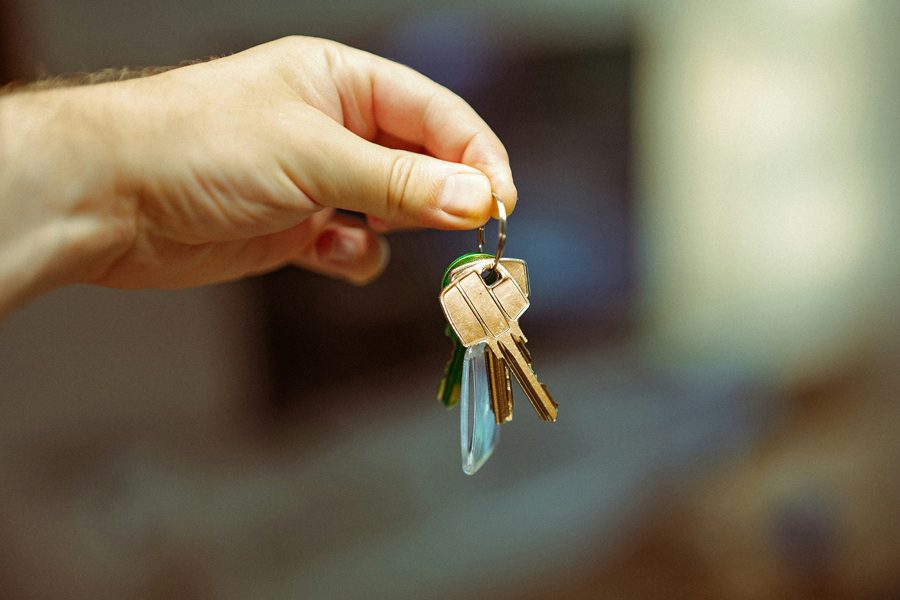How to Get Approved for a Home Loan Easily in 2025
Buying a home remains one of life’s biggest milestones, yet the path to mortgage approval can feel daunting amid fluctuating rates and economic shifts. As of September 2025, with average 30-year fixed mortgage rates hovering around 6.4%, aspiring homeowners face a competitive landscape. However, you can streamline the process by focusing on preparation and smart strategies. Research suggests that well-prepared applicants secure approvals faster and often snag better terms, even in a market where rates have dipped slightly from earlier highs. It seems likely that emphasizing credit health and income stability will boost your chances significantly.
Key points to remember:
- Preparation pays off: Boost your credit score above 620 for conventional home loan to access lower rates, though options exist for scores as low as 580 via FHA programs.
- Income matters, but flexibility exists: Lenders now accommodate gig workers with alternative documentation, reflecting the evolving workforce.
- Government aid helps: Programs like FHA and USDA offer lenient terms, but controversy surrounds their long-term costs versus benefits to balance affordability with future equity.
Additionally, always prioritize preapproval to stand out in bids. While the process involves some complexity, evidence leans toward proactive steps yielding smoother outcomes.

Why Preapproval Sets You Apart
First, seek pre-approval early. This step not only clarifies your budget but also signals seriousness to sellers. In 2025, with inventory still tight in many areas, pre-approved buyers often edge out competitors. Moreover, lenders review your finances upfront, catching issues before they derail your application.
Essential Tips for Applying
Gather documents like tax returns, pay stubs, and bank statements ahead of time. Then, shop multiple lenders to compare offers rates can vary by 0.5% or more. Finally, consider sustainable upgrades; green financing options may qualify you for incentives, adding value to your home.
In the ever-evolving world of home financing, securing a mortgage in 2025 demands more than just a dream address; it requires a strategic blueprint tailored to today’s economic realities. As rates stabilize around 6.4% for 30-year fixed loans, savvy applicants leverage preparation to turn potential hurdles into stepping stones. However, beyond the basics, unique insights into gig economy adaptations and eco-friendly incentives can elevate your application from standard to standout. This comprehensive guide draws from verified 2025 data, offering actionable advice that goes deeper than generic tips, helping you navigate approvals with confidence.
Home Loan: Understanding Mortgage Basics in Today’s Market
The mortgage landscape in 2025 reflects post-pandemic adjustments, with lenders emphasizing stability amid moderate rate declines. For instance, while conventional loans dominate, government-backed options provide lifelines for diverse borrowers. Therefore, grasping these fundamentals positions you for success.
Key Factors Lenders Evaluate
Lenders scrutinize several elements to assess risk. Primarily, they examine your credit score, income verification, and assets. In 2025, a minimum credit score of 620 unlocks conventional loans, but FHA programs allow 580 with a 3.5% down payment. Additionally, your debt-to-income (DTI) ratio plays a pivotal role aim for a back-end DTI under 36% for optimal approval odds, though Fannie Mae permits up to 45% with strong compensating factors like substantial reserves. Moreover, employment history matters; stable two-year records strengthen your case, but gig workers can now qualify using 12-24 months of bank statements to prove consistent earnings.
Down payments vary too: Conventional loans start at 3%, while VA loans offer 0% for eligible veterans. Consequently, aligning your profile with these criteria accelerates the process.
Building a Strong Financial Foundation
Preparation begins months before applying. By focusing on credit and debt management, you enhance your appeal to lenders. Furthermore, incorporating lesser-known strategies, such as leveraging gig income documentation, can make a significant difference.
Optimizing Your Credit Score
Your credit score influences rates and eligibility profoundly. In 2025, scores above 740 often secure the best terms, potentially saving thousands over a loan’s life. To boost yours, pay bills on time, reduce credit utilization below 30%, and dispute errors via annual free reports from Equifax, Experian, and TransUnion. However, avoid new credit inquiries close to application time, as they can temporarily ding your score.
For gig economy participants, who comprise over 36% of the workforce, lenders increasingly accept alternative credit data like utility payments. Thus, building a robust profile involves consistent financial habits.
Mastering Your Debt-to-Income Ratio
DTI measures your monthly debts against gross income. Lenders prefer a front-end ratio (housing costs) at 28% or less and back-end (all debts) at 36%. To improve, pay down high-interest debts first or increase income through side gigs. For example, USDA loans have flexible DTI guidelines, often approving ratios up to 41% with manual underwriting.
In the gig era, document variable income meticulously average earnings over two years to demonstrate reliability. As a result, even freelancers can achieve favorable DTIs.
Navigating the Preapproval Process
Preapproval transforms you from browser to buyer. This step involves a lender’s preliminary review, providing a conditional commitment letter. In 2025, it typically takes 1-3 days online, but gather documents early for efficiency.

Start by comparing lenders via tools like NerdWallet or LendingTree. Then, submit W-2s, tax returns, and proof of assets. Additionally, consider sustainable features; Freddie Mac’s GreenCHOICE Mortgages allow extra borrowing for energy-efficient upgrades, potentially lowering utility bills by 20-30%. Therefore, highlighting eco-upgrades during preapproval can enhance your borrowing power.
To maximize your amount, reduce DTI and boost down payments—aim for 20% to avoid private mortgage insurance (PMI).
Home Loan: Advanced Tips for Seamless Approval
Beyond basics, incorporate these under-the-radar strategies. First, explore government programs: The FHA’s 203(k) home loan finances renovations, ideal for fixer-uppers, while the Homeowner Assistance Fund aids those facing hardships with up to $80,000 in relief. Moreover, for sustainable homes, eco-mortgages from Fannie Mae offer rate discounts of 0.10% for energy-efficient properties.
Gig workers, take note: Use non-QM loans for flexible underwriting, focusing on bank deposits rather than W-2s. Furthermore, build reserves—lenders favor 2-6 months of expenses in savings.
- Document everything thoroughly: Provide explanations for any income gaps or large deposits.
- Shop rates aggressively: Use online calculators to compare APRs, not just interest rates.
- Consider co-signers wisely: They can help if your profile needs a boost, but ensure they understand the risks.
- Incorporate green incentives: Tax credits for solar panels can offset costs, making your application more attractive.
Common Pitfalls to Avoid
Many applicants stumble on avoidable errors. For instance, changing jobs mid-process raises red flags, as lenders seek stability. Similarly, opening new credit lines can spike your DTI. Instead, maintain the status quo until closing.
Other mistakes include skipping pre-approval, which weakens offers, or ignoring closing costs (3-6% of loan amount). Therefore, budget accordingly and consult professionals early.
| Mortgage Type | Minimum Credit Score | Down Payment | DTI Limit | Best For |
| Conventional | 620 | 3% | 36-45% | Strong credit borrowers seeking flexibility. |
| FHA | 580 (3.5% down) | 3.5% | Up to 43% | First-time buyers or lower credit scores. |
| VA | No minimum (often 620) | 0% | 41% | Veterans and military families. |
| USDA | 620 | 0% | Flexible (up to 41%) | Rural homebuyers with moderate income. |
| Green/Eco | Varies by program | Varies | Standard | Energy-efficient homes with incentives. |
This table highlights options, helping you choose based on your situation.
Home Loan: Frequently Asked Questions
What credit score do I need for mortgage approval in 2025?
You typically need at least 620 for conventional loans, but FHA allows 580 with a modest down payment. Higher scores yield better rates.
How does the gig economy affect my mortgage chances?
Gig workers can qualify using bank statements for income proof, though lenders may require 24 months of history. Non-QM options provide flexibility.
What are sustainable home financing options?
Programs like Freddie Mac’s GreenCHOICE allow extra funds for eco-upgrades, often with rate reductions. Check for tax incentives too.
How long does preapproval take?
It usually takes 1-10 days, depending on documentation readiness.
Can I get approved with high debt?
Yes, if your DTI stays under 45% with compensating factors like high reserves or excellent credit.
In conclusion, unlocking mortgage approval in 2025 hinges on proactive financial tuning and awareness of niche opportunities. By following these steps, you position yourself for not just approval, but a rewarding home ownership journey.


